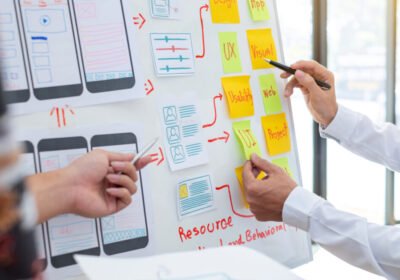Recent years have brought about significant changes in the way we approach training to prepare and develop ourselves professionally. There has been an increase in learning on the go, that is, consuming training resources while moving from one place to another (on commutes, for example). There has also been a growing preference for online training that can be done in the evenings, after work hours, and/or on weekends. Additionally, just as we might Google the answer to a question, we want to access training assets to perform a specific job or activity right when we need it.
With this in mind, there is a greater need to offer shorter, more relevant training that is available right when it’s needed, and that’s why microlearning has become very important within the world of corporate training.
What does microlearning consist of??
Microlearning consists of breaking down the necessary training into short, direct, bite-size segments. It can be used as part of formal training, in a series of recurring capsules in a learning pathway, or as a procedure that supports employee performance by distributing it openly, allowing employees to adapt their learning independently and choose the most appropriate resource as they need it. Typically, microlearning is offered in a digital format, which facilitates its access and application from devices such as smartphones, tablets, and computers.
How is gamification used in training?
The use of gamification for training has also become an important part of training strategies within companies in recent years, as it has demonstrated its ability to influence employee behavior. In essence, gamification uses the principles of games and related elements to make the learning experience more engaging for participants, so they retain the acquired knowledge better and longer. But it also helps in achieving other objectives such as improving the level of engagement, making the teaching-learning process more fun, increasing motivation levels to participate and complete the courses, simulating work situations so participants can feel connected to their reality and practice in a safe environment, promoting positive behavioral changes, and encouraging healthy competition, among others.
Both microlearning and gamification offer advantages for the training dynamics required today, and combining them is a trend that is charting a new way in online learning. Below are some examples of how to do it:
- Include gamified assessments as part of a formal training program.
- Include gamified assessments as performance support tools that are stand-alone capsules that can be posed as challenges after completing a training.
- Implement gamified learning pathways that feature various microlearning capsules. These pathways can have levels, challenges, prizes, leaderboards, etc.
- Gamified microlearning capsules can be offered in various formats that allow participants to practice and improve a specific competency, apply acquired knowledge, solve a problem, learn something new, etc.
As you can see, combining these two high-impact learning strategies—gamification and microlearning¬—results in an effective blend that will achieve the needed results. It makes learning fun and desirable while also creating a more relaxed environment. It encourages participants to be curious, motivating them to reach their goals, and, moreover, it’s so flexible that it works on any subject, even the most tedious and boring.
About the Author:

Yolanda Barquera is Director of Talent Development at IDESAA. She is a business coach and consultant in talent development and process analysis. She is passionate about development and processes of change and loves to get new opportunities to continue learning. She is a specialist in e-Learning project design and implementation.








